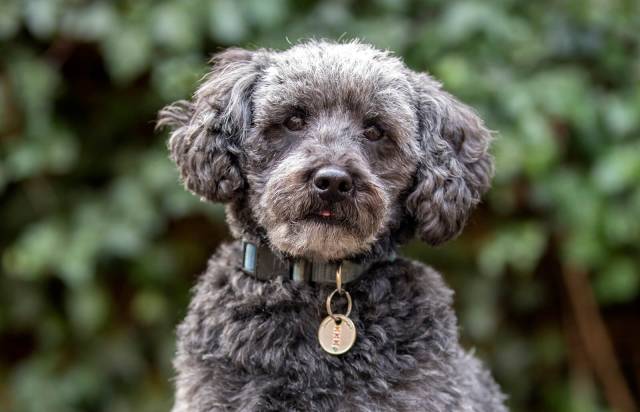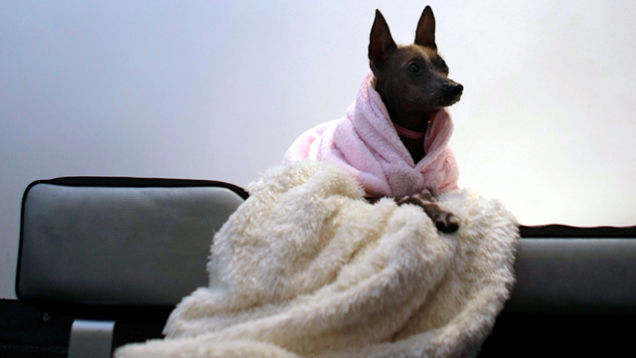Nobody can resist the Sheepadoodle! This is a big and fluffy pooch that everybody just wants to hug. They look like big teddy bears with adorable faces. Indeed, they are very friendly canines that can make wondering family pets.
Connect with a verified veterinarian in minutes. Licensed vets are available 24/7 to answer your questions. No need to worry about your furry family member.
But before you own any dog, it is important that you learn about the breed you are adopting and bringing into your family. This way, you can know how to meet all of their needs and make sure they are the right fit for your household. This means it is time to learn more about the Sheepadoodle and what this breed likes. So, let’s dive in and learn more about this adorable breed!
Origin
First of all, you may be wondering what exactly is the Sheepadoodle? This is a crossbreed between an Old English Sheepdog and a Standard Poodle. Together, this creates the Sheepadoodle and owners love to have them in the family. They take the best traits from both of these breeds. They are referred to often as a designer dog. Indeed, they are not purebred pooches and they are known as a crossbreed. This does mean that they are not eligible to be registered with the American Kennel Club. Poodles have always been popular pets but these elegant dogs were actually used to hunt waterfowl in Germany to begin with. In addition, the Old English Sheepdog has been a loved breed since the 1800s. In particular, they have been used by farmers for many years and they can control other animals.
Appearance
The Sheepadoodle is a larger pooch and they have a solid build. Normally, these furry friends will have a square or rounded face, as well as a long snout. Of course, everybody loves their low hanging ears. The coat can be either very curly or straight, as well as somewhere in between. There are a variety of colors for the Sheepadoodle. For example, they can be black, white or a combination of both colors. They can also have spots that make them almost look like pandas! Other colors include brown, grey, white and red. These are rarer and if you choose to get your Sheepadoodle from a breeder, they will be more expensive.
You should be aware that the Sheepadoodle really is a large breed. While they start off as cute and small puppies, they soon grow into a big bear. In particular, their fur can make them appear even bigger. You can expect a Sheepadoodle too weigh around 20 to 36 kg. There are also mini Sheepadoodles, which can be around 11 to 20 kg.

Review symptoms, medications & behavior to keep your pets healthy with a Vet Online in just minutes.
Ask a Vet Live NowTemperament
A lot of families want to know about the temperament of the Sheepadoodle before they adopt one. Indeed, this is important if you have children or other animals. The good thing about the Sheepadoodle is that they are known for being very sociable and friendly. Their lovely nature means that they can fit into any environment and be a fantastic addition to your home. In particular, they are gentle with children and are quiet with them. You should not have to worry about them being around kids, as long as your children are respectful of their space during the day.
In addition, Sheepadoodles are smart and their intelligence can be great for training. They should pick up new commands and tricks quickly. This is often faster than other breeds out there. They are also going to get along with other dogs that you have in the household. Just remember to socialize your Sheepadoodle from a young age and do some research on what the best way is to introduce new dogs.
Coat Maintenance
When it comes to maintenance of your Sheepadoodle’s coat, there is not much maintenance required. You will be pleased to hear that their coat does not shed a lot. This is because it is short and curly, taking this characteristic from their Poodle parent. But you will still have to brush your furry friend. Once or twice a week is enough to make sure that there are no tangles or matted fur. You may have to cut the hair so that it does not cover their eyes and affect their vision.
In addition, choosing a professional groomer is recommended. This is going to keep the coat low maintenance for you. A groomer will be able to bath your furry friend and trim the coat to look healthy. While you can attempt to groom your pooch yourself, it can be time-consuming and take a lot of energy. Plus, the giant Sheepadoodle may not stay still for you. Therefore, a professional groomer can make your life a lot easier. Do you have allergies? The Sheepadoodle may be a good breed for you. Most of them are hypoallergenic, which means that they should not aggravate your allergies. But to make sure that this is the case, verify this with the breeder you choose. Since they are a crossbreed, it is possible that one of their parents could affect this.
In addition, know that the floppy ears of the Sheepadoodle will require some maintenance. We are talking about regularly cleaning the ears to lower the risk of infection. This is something that they are prone to. You can always speak to your veterinarian about a good ear cleaner that you can use to stop this from happening.
Diet
As the Sheepadoodle is active during the day, they will benefit from several feeding times during the day. This can be around two to three times spread across the morning, afternoon and evening. You can choose what you think is the best diet for your furry friend. Some people prefer to feed their pup kibble while others want to keep their canine on a raw diet. This is going to be your choice. The most important thing to remember is that you should invest in your pup’s health by choosing quality food.
It is advisable not to have free-flowing food for your Sheepadoodle. In other words, a large bowl and they choose when to eat during the day. The simple reason is that a lot of furry friends do not know when to stop! This can lead to them being sick and becoming overweight. A Sheepadoodle will eat anything you put in front of them. They do not have self-control when it comes to dinner time.
Average Lifespan
Everyone wants to know how long their canine is going to live for. Of course, everybody wants to have their pooch as long as possible. The good thing about the Sheepadoodle is that they have a good average lifespan. They can live around 12 to 15 years. There are exceptions to this but if you are able to meet their needs and provide them with a healthy lifestyle, you may be able to prolong your Sheepadoodle’s life.
Training Time
Training from an early age is essential for all breeds. This is going to make sure that they listen to you when there are distractions and allow you to enjoy as much time with your canine as possible. For example, training should concentrate on obedience and recall, as well as leash walking.
The great thing about the Sheepadoodle is that they love to please their owners. This makes them easier to train than other breeds. They will love to learn new commands and if you give them a lot of praise, they will learn quickly. Indeed, they are intelligent canines and this means they will pick up the command easily.
In addition, do not forget about early socialization with your Sheepadoodle. It is imperative that all dogs are introduced to other furry friends when they are young. This makes sure that they can learn how to interact with other pups. And it can prevent future reactivity problems. Plus, it can let your Sheepadoodle have some friends that they can run around and play with. Therefore, if your friends or family have dogs, make sure you bring your young pup along to meet them. You can also take your Sheepadoodle to doggy day-care centers and dog walkers when they are older to meet other dogs.
Energy Level
The Sheepadoodle has a lot of energy to burn. They are excitable and love to run around. This means that they are a canine for active families and those that like to get outside and walk every day. Daily exercise will be essential for a Sheepadoodle’s wellbeing and this will keep them calm and non-destructive in the house. Ideally, two to three hours of exercise a day will be important. It can be less than this if your Sheepadoodle is running around playing fetch or with another furry friend.
Having a big yard is going to be important for a Sheepadoodle. This is going to give them the space they need to run around and have some fun during the day. If you have a small apartment, this would mean that you have to take them out more to burn their energy.
Sheepadoodles also need mental stimulation during the day. Since they are smart, they will pick up on training very quickly and this can also tire them out mentally. Again, without mental stimulation, Sheepadoodle will get bored and this is when they can get themselves into trouble at home.
Where to Find a Sheepadoodle
If you have been reading about the Sheepadoodle and decided this is the furry friend for your family, you will want to know where to find one. Of course, it is always good to rescue and adopt a pooch that needs a home. You can do this by visiting your local shelter and finding a canine you love. But this may be difficult if you are looking for a Sheepadoodle. It is not common to find them in local shelters. There may be rescues for this cute breed online that you can find and travel to. Chances are, if your heart is set on a Sheepadoodle, you may have to purchase one from a breeder. You will be able to find a breeder online and contact them about a puppy. But if this is how you want to bring your pup into your family, you need to make sure that you choose a reputable breeder. Otherwise, you may be encouraging puppy farming or end up with a dog that has health problems. This is something that nobody wants to do.
In order to find the right breeder, you need to do your own research online. This will involve looking for someone that has been breeding Sheepadoodles for years and that cares about their canines. This will take some time and it is not something that you want to rush. See if you can find testimonials and previous owners speaking about the breeder and what their experience was like. When you have found a breeder that you like, you should arrange a meeting with them. It is best to speak and ask them questions before you make a final decision. You will be able to tell if you like and trust them enough to choose a puppy for their litter. Always ask to see the parents before you take a puppy. This way, you can see that they are healthy and taken care of. If the breeder does not want to show you the parents or the other puppies and where they live, this could be a red flag. Be wary of this as there might be a bad reason why they are acting this way.
Be aware that Sheepadoodle can also be expensive. A pup can vary in price but you can expect them to be around $1,000 to $3,000. If you are looking for specific traits, this canine may cost more. For example, a Micro Sheepadoodle can be even more costly to buy. Getting a dog is a huge responsibility and also a financial commitment too.
Connect with a verified veterinarian in minutes. Licensed vets are available 24/7 to answer your questions. No need to worry about your furry family member.

Tom
Tom has always loved to write since he was little - he wanted to be either a writer or a veterinary doctor, but he ended up being a professional writer while most of his works are based on animals. He was born in San Francisco but later moved to Texas to continue his job as a writer. He graduated from the University of San Francisco where he studied biotechnology. He is happily married and a soon to be father!
Review symptoms, medications & behavior to keep your pets healthy with a Vet Online in just minutes.
Ask a Vet Live Now



